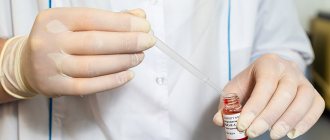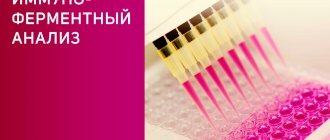Rheumatoid factor (RF) is a group of autoantibodies that react to particles entering the bloodstream from affected joints. Bacteria, viruses and other internal factors influence the properties of the protein. The body's immune system perceives them as foreign particles, as a result of which antibodies begin to be actively produced, which are detected in the laboratory.
The representative of rheumatoid factor is predominantly immunoglobulin M. At the beginning of the development of the disease, it is produced only in the joints in which pathological changes occur, but then it is also produced in the red bone marrow, spleen, lymph nodes, and subcutaneous rheumatoid formations.
Little is known about the nature of rheumatoid factor, but we can say for sure that RF (rheumatoid factor) in a biochemical blood test indicates the presence of autoimmune and inflammatory processes.
This analysis is prescribed in the following cases:
- If rheumatoid arthritis is suspected (symptoms include pain, swelling, impaired mobility in the joints, as well as the formation of characteristic thickenings in the form of nodules under the skin);
- Sjögren's syndrome (patients complain of xerophthalmia (dry and burning eyes) and xerostomia (dry mouth));
- Chronic inflammatory diseases of unknown etiology;
- As an additional diagnostic method for autoimmune diseases;
- Included in the complex of rheumatoid tests.
Rheumatoid factor in the blood indicates many diseases, but one of the main ones is rheumatoid arthritis, which affects every 3 residents of Russia.
At the Yusupov Hospital, qualified rheumatologists are always ready to offer you any medical services. The department's specialists provide medical and advisory assistance to all rheumatology patients. The Yusupov Hospital uses modern instrumental and laboratory research methods to identify diseases at the earliest stages. There is a laboratory on the territory of the hospital complex, so you will not need to go to other medical institutions to get tested. The Yusupov Hospital was created to make it as comfortable as possible for patients to stay in the hospital.
What is rheumatoid factor
The name itself, “rheumatoid factor,” is associated with rheumatoid arthritis.
But it is not so. It was discovered while studying rheumatoid phenomena in the joints, hence the name. In fact, the results of the study are a reliable marker for identifying any autoimmune processes. Rheumatoid factor (rheumatoid factor) is specific proteins of the body (autoantibodies) that react with special protective proteins of the immune system - immunoglobulins. It turns out that the body's cells act as enemy agents for its own immune system. If they are produced, the immune system attacks its own proteins, which leads to the destruction of healthy cells. Normally, rheumatic factor is not detected in humans, or its amount does not exceed 14 IU/ml. This tiny amount can only be determined by highly sensitive quantitative analysis.
To determine the rheumatic factor, the following methods are used:
- latex agglutination, also known as latex test;
- Valera-Rose reaction;
- nephelometry;
- linked immunosorbent assay.
Typically, a latex test and enzyme-linked immunosorbent assay (ELISA) are used to identify rheumatic factor.
With the latex test, a rapid determination of the presence of these proteins is done (yes/no).
With enzyme immunoassay, quantitative indicators of rheumatic factor can be determined.
Interpretation of results
To obtain a competent interpretation of the results of a blood test for rheumatoid factor
you need to see a doctor. When assessing them, it is necessary to take into account a large number of different factors that only a specialist can determine. The test results cannot be used for self-diagnosis. It is important to remember that self-medication can cause irreparable harm to health.
In the absence of pathologies, RF activity is low. Normally it is up to 14 IU/ml. An increase in indicators may indicate pathologies such as arthritis, biliary cirrhosis, cryoglobulinemia, malignant neoplasms, etc. A slight excess of the norm is possible in old age.
Sometimes patients present with characteristic symptoms of rheumatoid arthritis, but RF levels remain within normal limits. In such cases, a comprehensive examination is carried out to establish an accurate diagnosis and choose treatment tactics. Test results are required to diagnose Sjögren's syndrome and to confirm rheumatoid arthritis. The results obtained are considered in conjunction with the clinical picture and medical history. It is impossible to confirm or refute the diagnosis based on test results alone.
When is an RF test prescribed?
The analysis is prescribed in case of suspected autoimmune diseases. Many of these diseases have their own specific manifestations, but often at later stages. At their onset, their diagnosis can be difficult, since the symptoms are usually similar to other chronic inflammatory processes. A rheumatic test allows you to identify autoimmune pathology at an early stage.
It is prescribed to determine:
- rheumatoid arthritis - in case of prolonged inflammatory processes in the joints that are not amenable to standard treatment;
- rheumatism of the heart - pericarditis, rheumatic myocarditis and rheumatic heart defects;
- systemic lupus erythematosus - acute autoimmune damage to various organs (skin, heart, joints, kidneys) and the nervous system;
- systemic vasculitis – lesions of the cardiovascular system of an autoimmune nature;
- kidney damage - rheumatic glomerulonephritis and pyelonephritis;
- lesions of the central nervous system – multiple sclerosis;
- lesions of the pancreas – autoimmune diabetes type 1.
Most often, autoimmune diseases affect several body systems at the same time. For example, with systemic lupus erythematosus, not only the skin is affected, but also the joints and heart (lupus myocarditis). For this reason, the study is prescribed in the presence of inflammatory processes manifested in any organs, or in case of prolonged low-grade fever (body temperature up to 37.5C) and poor health.
General information
Rheumatoid arthritis is a chronic inflammatory disease. First of all, one or more joints are affected. Often pathological changes are irreversible; over time they only progress. Under the influence of various factors, the disease usually worsens. As the pathological process progresses, it can affect internal organs, the nervous system, and blood vessels. Complications can develop at any stage of the disease. Effective treatment is required to stabilize the patient's condition. This disease is characterized by symptoms such as stiffness of joint movement (especially immediately after waking up), fever, joint pain, and weakness.
Sjögren's syndrome affects the exocrine glands. There are primary and secondary diseases. Most often it affects women (about 90% of all patients). In most cases, the salivary or lacrimal glands are affected.
How to prepare for research
Basic rules of preparation:
- Blood is donated from a vein in the morning on an empty stomach; before the test you must refrain from eating for 8-12 hours.
- Do not drink any drinks (coffee, tea, etc.). Before the analysis, you can only drink clean water.
- Avoid alcohol and smoking for 24 hours before blood collection;
- Do not eat fatty, spicy, smoked, or other “heavy” foods the day before the test.
- Be sure to inform your doctor about the drugs you are constantly using, as they may affect the test result.
Norms of rheumatoid factor in the blood
In a healthy body, rheumatoid factor should be absent or present in minimal quantities. In this case, the person lives a normal, full life. The maximum norm is 25 IU per 1 ml of blood
.
Rheumatoid factor is determined equally for everyone and does not depend on gender. The normal value differs only for older people (after 50). In a child (under 16 years of age), this figure should be on average 12-12.5 IU per ml of blood
.
Rheumatoid factor, which is recommended for all people over 50 to be tested for, makes it possible to diagnose the following diseases:
- rheumatoid arthritis (diagnosis, blood test);
- various autoimmune diseases;
- rheumatism, etc.
Results of rheumatic factor analysis
Based on the results of the analysis, we can conclude that the rheumatic factor increases:
- slightly increased – from 15 to 50 IU/ml;
- elevated – 50-100 IU/ml;
- significantly increased – above 100 IU/ml.
By the amount of rheumatic factor, the severity of the autoimmune process can be determined.
The analysis is very important, since its result will show the presence and intensity of autoimmune processes and will allow you to quickly select the most effective treatment.
Data decryption
Before taking a test for rheumatoid factor, patients must adhere to several rules: donate blood on an empty stomach, do not drink alcohol and do not smoke. It is important to follow all of these instructions to avoid false positive results.
Normally, the activity of rheumatoid factor in the blood should be within 14 IU/ml (or 10 U/ml). This figure is the same for men and women.
Rheumatoid factor may be elevated and normal in the following situations:
- Old age of the patient;
- Taking medications immediately before the test;
- Condition after vaccination.
However, if the doctor has ruled out these conditions, then elevated test results may indicate the presence of:
- Rheumatoid arthritis (with very high titers);
- Sjögren's syndrome;
- Mixed cryoglobulinemia (vasculitis);
- Connective tissue diseases;
- Systemic lupus erythematosus;
- Scleroderma;
- Systemic vasculitis;
- Juvenile arthritis (develops at a young age);
- Hypersensitizing vasculitis;
- Polymyositis;
- Diseases of an infectious nature (bacterial endocarditis, tuberculosis, parasitic infections, salmonellosis, brucellosis, syphilis, influenza, chronic hepatitis, mumps, rubella and others);
- Various diseases of the pulmonary system (silicosis, sarcoidosis, asbestosis, interstitial fibrosis);
- Cirrhosis of the liver;
- The presence of malignant neoplasms (colon cancer, leukemia).
An increase in rheumatoid factor is assessed according to the following criteria:
- A slightly elevated result is considered to be 15-30 IU/ml;
- 30-60 IU/ml - increased result;
- More than 60 IU/ml is a significant increase in rheumatoid factor.
It should be noted that the rheumatologist may send the patient for re-testing or for additional other research methods if the rheumatoid factor level is low. This circumstance only indicates that the very presence of this factor in the blood is an indicator of the presence of various diseases in the body.
References
1. Chaltsev, B. D., Vasiliev, V. I., Palshina S. G. [etc.]. Clinical guidelines for the diagnosis and treatment of Schörgen's disease with anticentromere antibodies. Scientific and practical rheumatology, 2019. 2. Rheumatoid arthritis. Clinical recommendations. approved Ministry of Health of Russia, 2021. - URL: https://legalacts.ru/doc/klinicheskie-rekomendatsii-revmatoidnyi-artrit-utv-minzdravom-rossii/ (access date: 02/11/2021). 3. Croia, C, Bursi, R, Sutera, D, One year in review 2021: pathogenesis of rheumatoid arthritis. Clinical Experience in Rheumatology, 2021.
Causes of rheumatoid arthritis
Currently, there is no reliable data on the causes of the disease. There are several most likely versions supported by most of the medical community. The most popular of them is that RA is caused by several factors present in the patient’s medical history at the same time.
- Genetic predisposition to autoimmune disorders.
- Presence of MHC class II antigen (noted in most patients).
- Infectious agents: paramyxoviruses, hepatoviruses, retroviruses.
- The presence of antibody titers to the Epstein-Barr virus (found in 80% of patients).
Thus, the risk of developing rheumatoid arthritis is higher in women aged 35 - 40 years and older. Increases the chances of having close relatives with a similar diagnosis, as well as previous diseases such as measles, hepatitis B, lichen, herpes, mumps.
Any changes in the immune system, which begin an attack on one’s own connective tissue, can activate the pathological process. Among the triggering factors are frequent hypothermia, hyperinsolation (sunstroke), prolonged intoxication, viral and bacterial infections. May be affected by medications, disruption of the endocrine glands, long-term stress and depression.
Treatment
Therapy is aimed at containing the progression of the disease, reducing inflammation and preventing joint deformation and loss of functionality. The following medications are prescribed:
- Non-steroidal anti-inflammatory substances. They reduce pain to some extent and slow down the progression of RA. May include inhibitors and blockers for IL-1, IL-6, TNF-alpha. They do not block the development of erosion and disease, therefore they are used as aids.
- Glucocorticoids. Prescribed in combination with anti-inflammatory drugs. Allows you to control the development of severe monoarticular and oligoarticular symptoms. Not used on a regular basis, as they often cause unpleasant metabolic effects.
- Basic drugs. Essential medications that can significantly slow the progression of arthritis. Courses of treatment range from several weeks to several months. The drugs differ in chemical composition and pharmacology. They are combined with each other to select the optimal treatment with the greatest effect. According to statistics, ⅔ of patients who completed the course experience significant improvement, more than half of them achieve complete remission. However, you should be aware of the toxicity of these drugs. The doctor and patient must weigh all the risks and conduct regular monitoring of the patient’s condition.
Thus, the main treatment includes basic drugs, especially methotrexate, biological antagonist drugs, and immunomodulatory drugs. Other methods of auxiliary therapy include physiotherapeutic procedures, therapeutic exercises, and a balanced combination of physical activity and rest. Quitting alcohol and smoking can prolong the patient's life. Joint curvature can be corrected through surgical correction.
Forecast
Rheumatoid arthritis shortens a person's life expectancy for a number of reasons. The risk of heart disease doubles. This is caused by the presence of chronic inflammation. The situation can be aggravated by concomitant pathologies, for example, diabetes, obesity, alcoholism.
With the development of AA amyloidosis, despite treatment, the average life expectancy of the patient is about 10 years from the onset of the disease. Without therapy, the period is estimated at several years. A common cause of death is kidney failure. On average, RA shortens life by 3 to 7 years due to the high risk of infections and gastrointestinal bleeding.
Drug therapy is also not perfect. It can cause concomitant diseases and become one of the factors in the development of malignant neoplasms. Criteria for poor prognosis include:
- early (up to 4 months) x-ray changes in joints;
- persistent increase in erythrocyte sedimentation rate;
- constant involvement of new joints;
- carriage of HLA-DR4 antigens.
About 10% of patients are doomed to severe disability with loss of self-care skills. Rheumatoid arthritis is most severe in women, smokers, and Caucasians.






